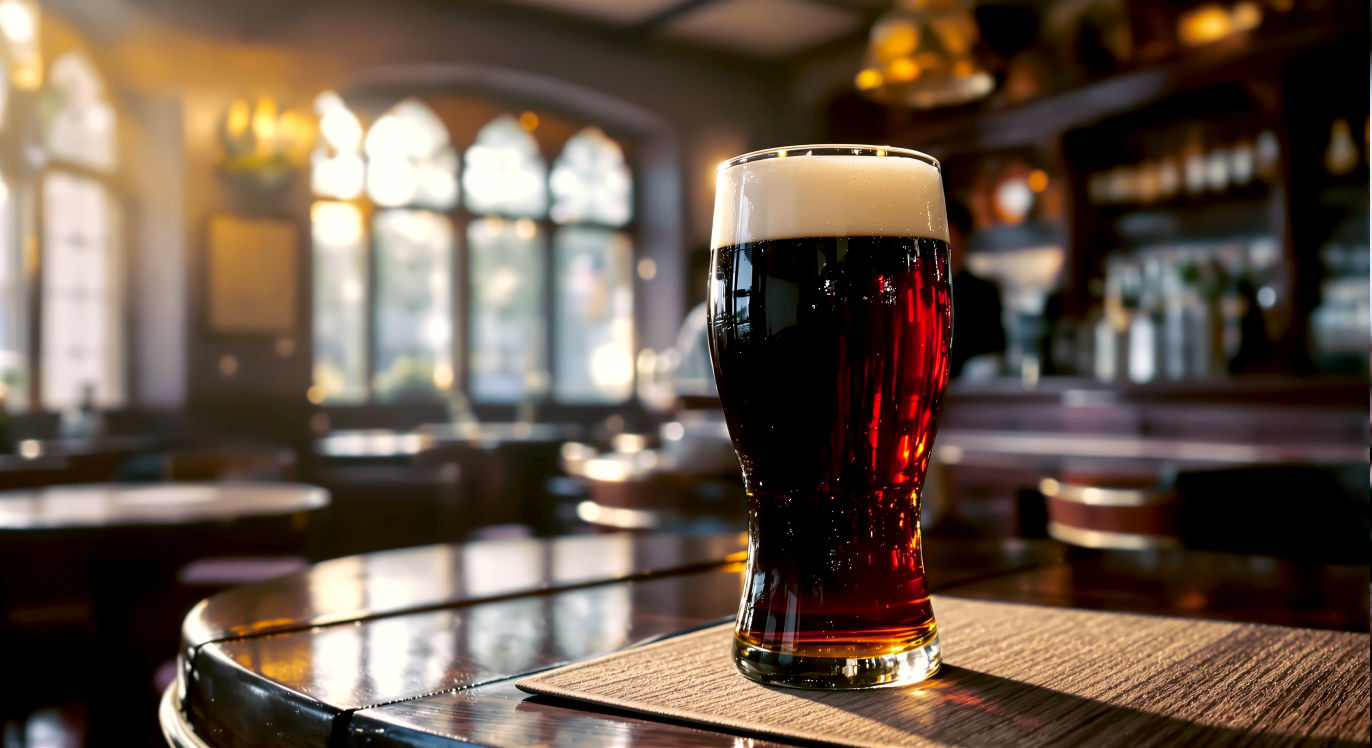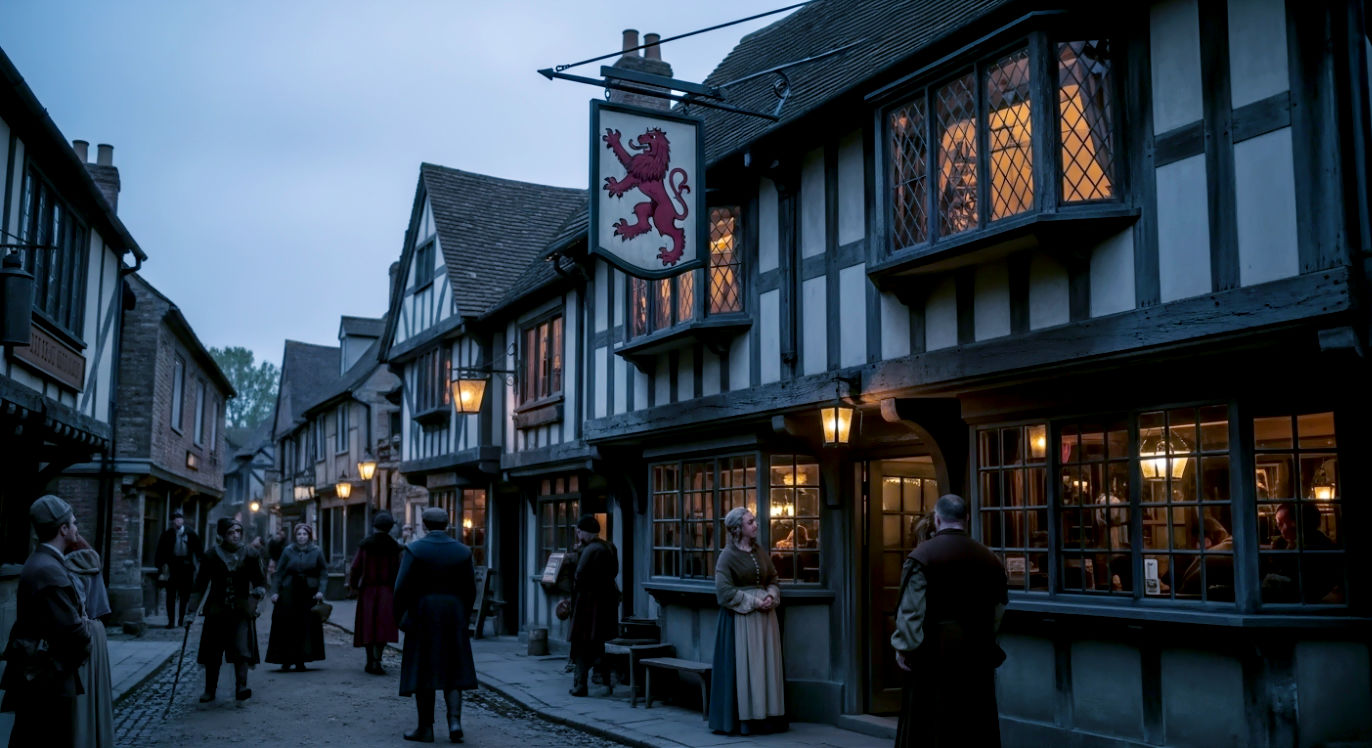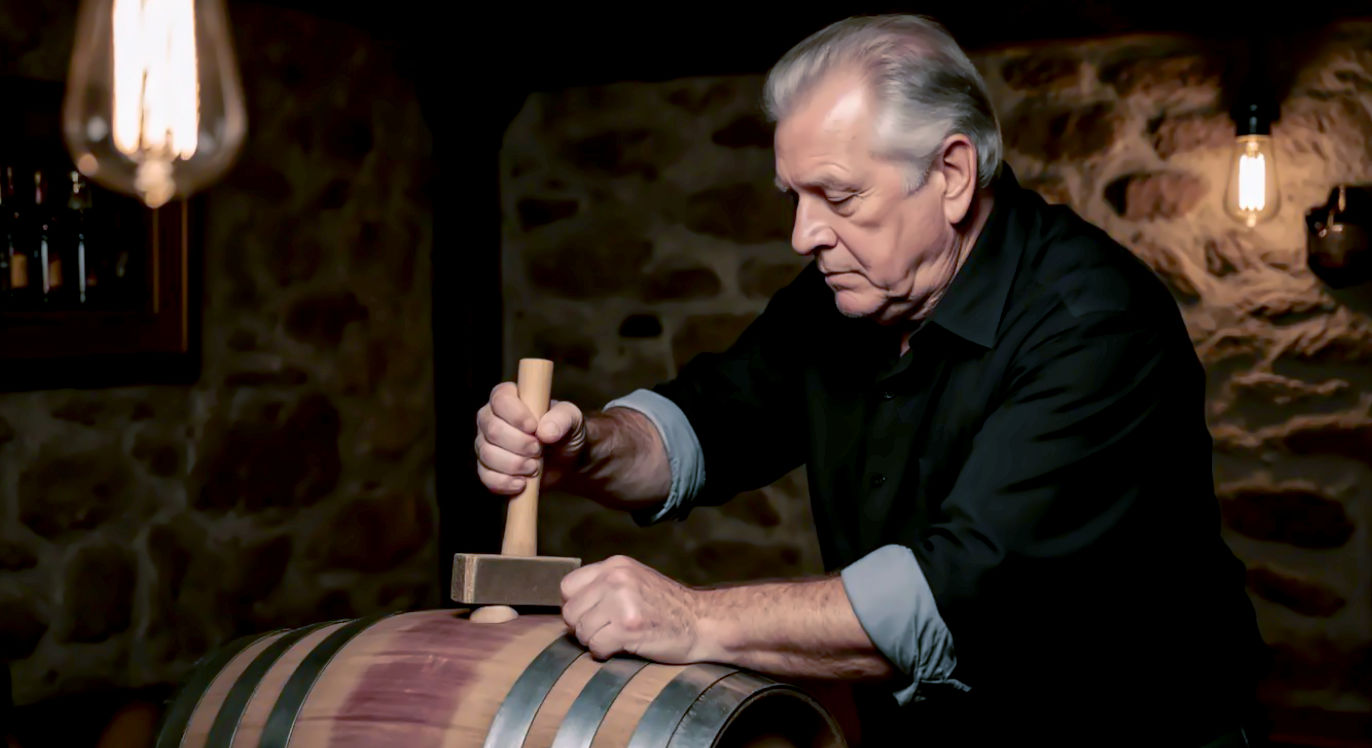Your Guide to the Great British Pub: More Than Just a Pint
Your great British pub guide. Discover its Roman origins, unwritten rules, the difference between a pub and a bar, and why it’s still the heart of UK life.

This post may contain affiliate links. If you make a purchase through these links, we may earn a commission at no additional cost to you.
Step out of the drizzle on a grey British afternoon, push open a heavy wooden door, and you’re hit with it. It’s a warm, welcoming wave of sound and smell—the low hum of conversation, the clink of glasses, the faint aroma of stale beer, polished wood, and hot chips. You’ve just walked into a Great British Pub, an institution as iconic and essential to the United Kingdom’s identity as a cup of tea, a red post box, or a Sunday roast.
But what is a pub? To an outsider, it might just look like a bar. But for the people of Britain, it’s so much more. It’s the ‘third place’—not home, not work, but a neutral ground where communities come together. It’s a living room, a debating chamber, a sports stadium, a village hall, and sometimes, a shoulder to cry on. From the spit-and-sawdust boozers of London’s East End to the cosy, fire-lit inns of the Yorkshire Dales, the pub is the beating heart of British life. This is the story of how it got there, what it means to us, and where it’s going next.
What Actually Makes a Pub, a Pub?
Before we dive in, let’s get our terms straight. A pub, short for Public House, is different from a bar. A bar is primarily designed for selling and drinking alcohol. A pub, on the other hand, is a home that is open to the public. That’s the traditional idea, anyway. The person running it is the ‘publican’ or landlord/landlady, and they often live right above the shop. This creates a more homely, personal atmosphere.
The Key Ingredients of a Proper Pub
While they come in all shapes and sizes, most true British pubs share a few key features:
So, a pub isn’t just a place that sells beer. It’s a community hub with its own rules, traditions, and a unique, homely feel that has been brewing for nearly two thousand years.
The Long and Winding History of the Local
The story of the British pub didn’t start with a pub. It started with a road. When the Romans invaded Britain in AD 43, they built their famously straight roads to connect their new towns. Along these roads, they set up ‘tabernae’—shops that sold wine to thirsty soldiers and travellers. These were the earliest ancestors of the pub.

From Alehouses to Famous Inns
After the Romans left, the Anglo-Saxons took over. They weren’t big wine drinkers; their drink of choice was ale. Women, known as ‘alewives’, would brew it at home. When a batch was ready, they’d stick a pole covered in greenery (an ‘ale-stake’) outside their door to let people know. These private homes, or alehouses, became the new community watering holes.
By the medieval period, things started getting more organised. As more people travelled for trade or religious pilgrimages, inns sprang up to offer food, drink, and a bed for the night. These were often large, purpose-built establishments. Famous examples that still exist today include Ye Olde Trip to Jerusalem in Nottingham, which claims to be the oldest inn in England, supposedly established in 1189.
In 1393, King Richard II passed a law forcing all places selling ale to have a sign outside. This was so the official ‘ale taster’ could find them easily to check the quality. This is why pubs have such distinctive, pictorial signs—most people couldn’t read, so a picture of a white hart or a blue boar was easier to recognise.
Gin, Beer, and the Modern Pub
The 18th century brought a huge change: gin. The ‘Gin Craze’ saw cheap, potent gin flood the cities, causing widespread social problems. To combat this, the government passed the Beerhouse Act of 1830. This made it much easier to get a licence to brew and sell beer. Thousands of new beer houses opened, often in people’s front rooms, creating the small, local pubs we still see on street corners today.
The Victorian era was the golden age of pub building. As cities boomed during the Industrial Revolution, magnificent, ornate pubs were built to give working men an escape from the grime of the factories. They had engraved glass, polished mahogany bars, and gleaming tiles—nicknamed ‘gin palaces’ for their splendour.
This was also when the ‘tied house’ system became dominant. Big breweries started buying up pubs and forcing them to sell only their beer. This gave the breweries huge power but also meant many small, independent pubs were lost.
The Pub as the Heart of the Community
A pub is far more than just bricks and mortar. It’s a social engine—a place where friendships are forged, deals are struck, and life unfolds. This role as a community’s living room is what truly sets it apart.
The ‘Third Place’
Sociologists talk about the ‘third place’—a spot that isn’t home (the first place) or work (the second). The pub is the perfect example. It’s a neutral space where people from all walks of life can mix. In many villages, the pub is the only public indoor space left. It’s where the local football team celebrates a win, where the parish council holds meetings, and where lonely people can find a friendly face.
When a local pub closes, it’s not just a business shutting down; it’s a community losing its anchor. Studies have shown that villages with a thriving pub have a stronger sense of community spirit.
Pub Culture and Etiquette: The Unwritten Rules
Walking into a British pub for the first time can be a bit daunting. There’s a whole set of unwritten rules that everyone seems to know.
- Ordering at the Bar: As mentioned, you go to the bar to order. Find a gap and try to make eye contact with the bartender. Waving cash around is a big no-no. Be patient—they know you’re there.
- The Round System: This is a cornerstone of British pub culture. If you’re with a group, you don’t just buy your own drink. One person buys a ‘round’ of drinks for everyone. Then, the next person buys the next round, and so on. It’s a system built on trust and generosity. Crucially, don’t skip your turn! And don’t try to leave just before it’s your round to buy—it’s considered the ultimate social crime.
- Finding a Seat: You don’t have to be shown to a table. If a table is empty, it’s yours. If it’s busy, it’s perfectly acceptable to ask, “Is anyone sitting here?”
- Tipping: Tipping isn’t expected in most pubs. If you’ve had great service, you can say, “and one for yourself,” which invites the bartender to take the price of a small drink for themselves.
More Than a Drink: Quizzes, Darts, and Sunday Lunch
Pubs aren’t just for drinking. They are centres of entertainment. The pub quiz is a national obsession, a weekly ritual where teams battle it out over trivia questions. It’s a serious business, filled with friendly rivalry.
Many pubs also have a dartboard or a pool table. Pub sports are a huge part of the culture, with local leagues for darts, pool, and even more obscure games like bar billiards. On weekends, the pub is often the best place to watch football or rugby on the big screen, with the whole building roaring and groaning in unison.
And then there’s pub grub. For decades, pub food meant a packet of crisps or a pickled egg. But today, food is a massive part of the pub experience. From a classic ploughman’s lunch (bread, cheese, and pickle) to fish and chips, a good pub offers hearty, comforting food. The Sunday roast—with beef or chicken, roast potatoes, Yorkshire puddings, and gravy—is a weekend institution, a perfect excuse for the whole family to gather at the local.
The Nuts and Bolts of Running a Pub
Being a landlord or landlady might seem like a dream job—chatting with locals and pulling pints all day. But behind the bar, it’s a complex and demanding business.

The Cellarman’s Art
The soul of a pub is in its cellar. This is where the beer is kept, and getting it right is a real skill. Cask ale, in particular, needs careful handling. It arrives in barrels containing live yeast. The publican has to let it settle, tap it, and vent it at just the right times to ensure it’s perfectly conditioned.
A well-kept pint of real ale should be served at cellar temperature (around 11-13°C), not ice-cold like lager. It should be clear, not cloudy, and have a creamy head. A bad pint can ruin a pub’s reputation, while a good one will have people coming back for more. This is why organisations like CAMRA (the Campaign for Real Ale) were founded—to celebrate and protect the art of traditional British beer and the pubs that serve it.
Free House vs. Tied House
Not all pubs are created equal. Their ownership structure makes a huge difference to what they can sell and how they operate.
- A Free House is a pub that is owned independently. The landlord is free to buy their beer and other supplies from any brewery or company they choose. This usually means they have a wider, more interesting selection of drinks, often featuring local craft beers.
- A Tied House is owned by a brewery or a large pub company (‘pubco’). The pub is then leased to a landlord, who is tied into a contract to buy most or all of their beer and other drinks from that company. This can restrict choice and often means higher prices for the landlord, making it harder to turn a profit.
The debate over the tied house system has been raging for decades. Critics say it stifles competition and puts huge financial pressure on publicans. Supporters argue that it gives people a lower-cost way to get into the business of running their own pub.
The British Pub Today: Challenges and Changes
For all its history and cultural weight, the Great British Pub is facing some of its toughest challenges yet. In recent decades, thousands of pubs have closed their doors for good. The reasons are complex.
The Threats to the Local
Changing social habits are a big factor. People drink less than they used to, and young people, in particular, are more likely to spend their money on other experiences. The smoking ban, introduced in 2007, was a major change. While it made pubs much healthier and more pleasant environments for non-smokers and families, it also pushed some long-term regulars away, who preferred to drink at home where they could smoke.
The price of a pint is another huge issue. High taxes on beer in the UK, combined with rising business rates and energy costs, have squeezed pubs’ profit margins to breaking point. Supermarkets selling cheap alcohol have also made it much more tempting for people to stay at home.
The Rise of the Gastropub and the Micropub
But it’s not all doom and gloom. The pub is evolving. One of the biggest trends of the last 20 years has been the rise of the gastropub. These are pubs that focus as much on high-quality food as they do on drink. They’ve transformed the reputation of pub grub from basic fare to gourmet dining. Famous chefs have opened gastropubs, and some have even earned Michelin stars. For some, this is a betrayal of the traditional ‘wet-led’ pub, but for others, it’s a necessary evolution that has brought new life and new customers into the industry.
At the other end of the scale is the micropub movement. These are small, simple pubs, often set up in empty shops. They focus on one thing: serving excellent cask ale in a quiet, friendly environment. There are no TVs, no music, no fruit machines—just good beer and conversation. It’s a back-to-basics approach that has proved hugely popular.
The Enduring Magic of the Pub
So, what is the future of the Great British Pub? It will no doubt continue to change. Some old-school boozers will disappear, while new and different kinds of pubs will emerge. But the fundamental need for a place to gather, to talk, to laugh, and to share a drink is not going anywhere.
The pub has survived Roman rule, medieval plagues, the Gin Craze, two World Wars, and countless economic recessions. It has adapted and endured because it is woven into the very fabric of British life. It is more than just a business; it’s a repository of stories, a guardian of community, and a symbol of a certain kind of warm, unpretentious hospitality.
As the writer George Orwell once described in his perfect imaginary pub, ‘The Moon Under Water’, it is a place of comfort, tradition, and quiet contentment. It is, and always will be, the heart of Britain. So next time you push open that heavy door, take a moment. You’re not just entering a building; you’re stepping into a piece of living history. Cheers to that.
Further Reading
For those interested in learning more about the Great British Pub and the ongoing efforts to protect it, here are some excellent resources:
- CAMRA (Campaign for Real Ale): The leading voice for beer drinkers and pub-goers in the UK. Their website is a treasure trove of information on real ale, pubs, and campaigning efforts.
- The Pubs Code Adjudicator: An independent body that oversees the relationship between large pub-owning businesses and their tied tenants.
- The National Trust – Historic Inns and Pubs: The National Trust owns and protects many historic pubs across the country. You can find a list of them on their website.
- The British Beer & Pub Association (BBPA): The leading trade association representing brewers and pub companies in the UK.




